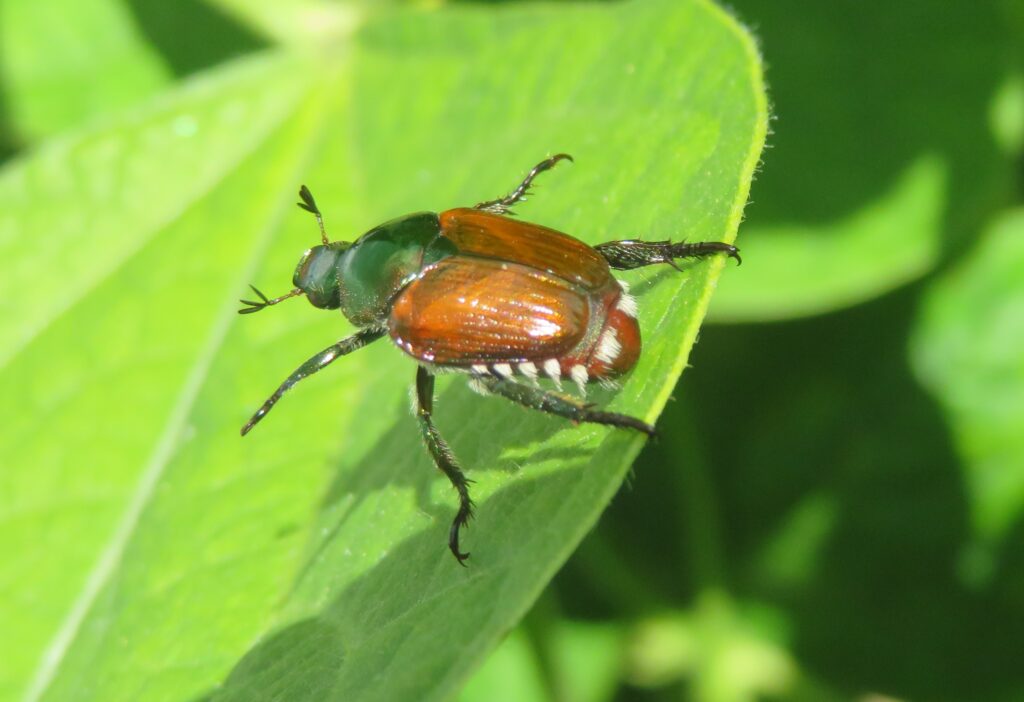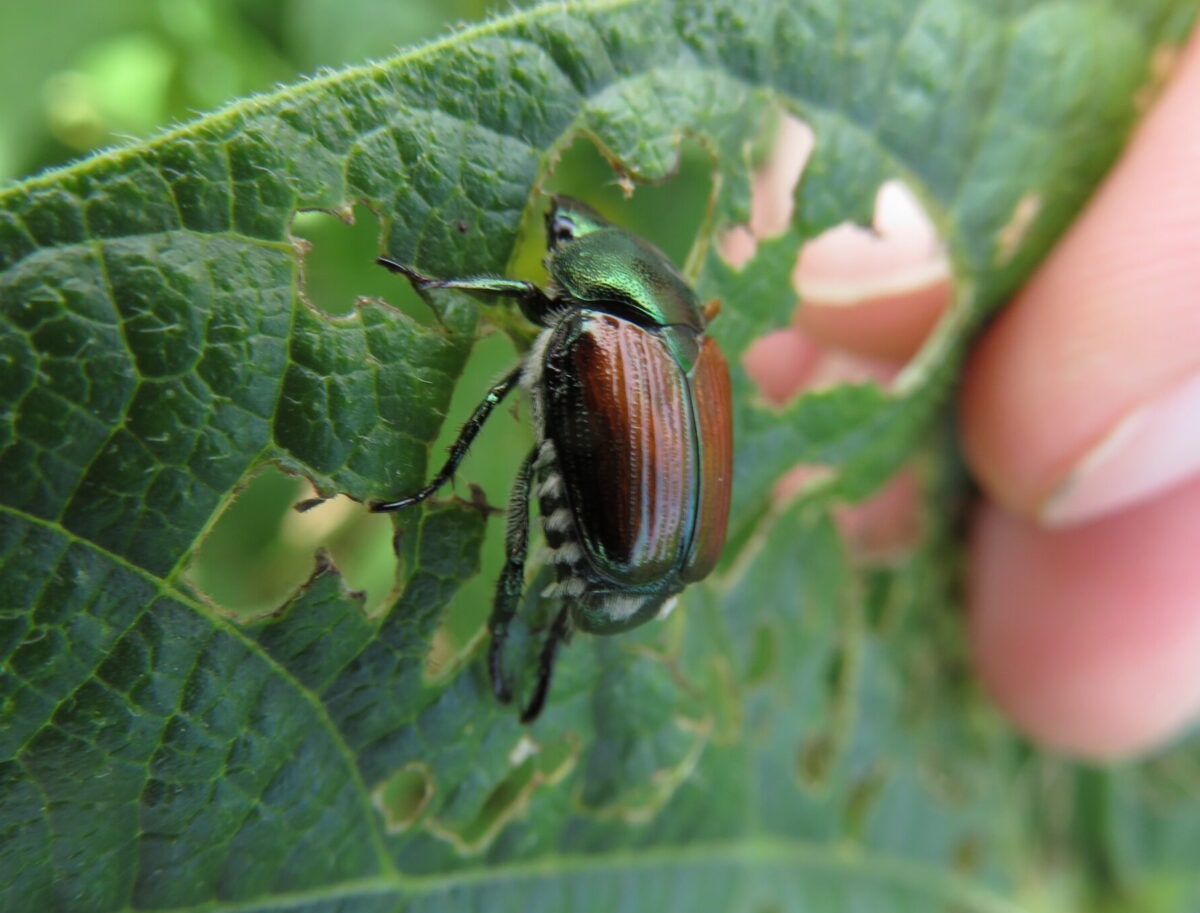Japanese Beetle (Popillia japonica)
Description
Japanese beetle grubs are similar to European chafer and June beetle grubs, but are much smaller and have a different raster pattern (anal bristles) that can be identified using a hand lens (see grub section at beginning of the insect chapter of OMAFRA Agronomy Guide for Field Crops – Publication 811).
The adult beetles are approximately 13 mm (0.5 in.) in length and can be easily identified by their bright, metallic-green head and coppery wings tinged with green edges. They have 12 white tufts of hair along the margin of their abdomen.
Life Cycle
Japanese beetles have only one generation a year. They overwinter as third instar larvae below the frost line. These grubs are the least tolerant to cold soil temperatures. Once the soil has warmed up above 15°C, the larvae migrate to the surface and feed on plant roots until mid- to late June, after which time they pupate to become adults. Adults emerge in early July, live for approximately 40 days and feed on many types of plants, including soybean, dry bean, ornamental plants, fruit crops and occasionally corn silks. Once mated, females lay their eggs in the soil, which hatch in a few weeks. Larvae begin feeding on roots, molting through three instars before preparing for overwintering by migrating below the frost line by early October.
Damage
Both the larval and adult stages of Japanese beetle can feed on field crops. This pest is most commonly found in the Niagara/Hamilton region, though it is known to be present across Ontario. Soybean and hay fields in particular tend to experience some root-feeding damage from the larvae. Adults will also feed on soybeans, dry edible beans, fruit crops and ornamental plants, causing leaves to appear skeletonized. Scouting and threshold guidelines are based on the level of defoliation and crop growth stage.
Table 1. Defoliation Threshold for Dry Beans
| Bean Growth Stage | Defoliation Threshold |
| Prior to bloom (vegetative stages) | 35% |
| After bloom up to pod-fill | 15% |

